MG MG5 vs Vauxhall Astra – Differences & prices compared
Two cars, one duel: MG MG5 meets Vauxhall Astra.
Which one wins in performance, efficiency and value for money? Find out now!
The automotive market has witnessed a surge in electric and hybrid vehicles, with manufacturers continuously striving to innovate and enhance their offerings. Today, we put two prominent models in the spotlight: the MG MG5 and the Opel Astra. While both cars are designed to meet modern driving needs, they cater to different segments of the market. Let's dive into the technical specifications, designs, and innovations, to determine which vehicle stands out in this competitive landscape.
Design and Body Type
The MG MG5 stands out as a wagon, boasting a more spacious interior and cargo area, offering up to 479 liters of trunk capacity. With a length of 4600 mm, width of 1818 mm, and height of 1543 mm, this electric vehicle (EV) is designed for practicality while maintaining an elegant silhouette.
On the other hand, the Opel Astra is a hatchback, aiming for a sportier aesthetic and driving dynamics. Its compact design makes it ideal for urban environments, but it still manages to provide convenient trunk capacity ranging from 352 to 422 liters, depending on the model. The Astra measures 4374 mm in length and has a width of 1860 mm, with heights varying between 1432 mm and 1488 mm for different trims.
Performance and Powertrain
When it comes to powertrains, the MG MG5 is solely electric, with two battery options of 57.7 kWh and 48.3 kWh. It delivers impressive performance with power outputs of 156 HP and 177 HP, achieving a maximum speed of 185 km/h and an acceleration of 0-100 km/h in just 8.3 seconds. The consumption figures stand at around 17.5 to 18.4 kWh/100 km, giving it an electric range of up to 400 km.
Conversely, the Opel Astra is available in a range of powertrains, including petrol, diesel, mild-hybrid electric vehicle (MHEV), plug-in hybrid, and fully electric versions, showcasing its versatility. The Astra’s power output varies from 110 HP to a robust 225 HP, with different trims offering acceleration from 7.5 seconds to around 10.6 seconds for 0-100 km/h. Its fuel consumption ranges significantly, depending on the engine type, with petroleum-based versions averaging about 5 to 5.8 L/100 km and electrics drawing approximately 15.5 kWh/100 km, while delivering an electric range of 63 to 418 km.
Technological Innovations
Both vehicles are packed with modern technology catering to driver convenience and safety. The MG MG5, being a new entrant in the EV segment, incorporates features such as advanced infotainment systems with connectivity options, various driving modes, and extensive safety features like automatic emergency braking and lane keep assist as standard.
The Opel Astra, traditionally known for its innovation, comes equipped with advanced driver assistance systems (ADAS), including adaptive cruise control, blind-spot monitoring, and a state-of-the-art infotainment system with seamless smartphone integration. Moreover, it offers a dual-clutch automatic transmission in certain trims, which enhances shift quality and driving responsiveness.
Environmental Considerations
The MG MG5 emphasizes its eco-friendliness with a CO2 rating of 0 g/km, making it an attractive option for the environmentally conscious consumer. The Astra, while also offering electrification options, has a wider CO2 emission range, with figures going up to 132 g/km for its higher-emission variants. The Astra’s plug-in hybrid variants showcase a considerable reduction in emissions with a CO2 rating as low as 30 g/km, appealing to buyers focusing on sustainability without sacrificing performance.
Pricing and Market Position
Pricing plays a vital role in consumer decisions. The MG MG5 typically falls within a competitive price bracket for electric vehicles, appealing to budget-conscious buyers looking to transition to electric mobility without breaking the bank. On the other hand, the Opel Astra covers a wider market spectrum with various trims that cater to different customer needs, from basic models to more performance-oriented versions.
Conclusion
In conclusion, the MG MG5 and Opel Astra present distinct choices for today’s drivers. The MG5 excels in the electric vehicle market with its spacious design and exemplary green credentials, whereas the Astra stands out with its diversity in powertrains and performance options. Ultimately, the right choice will depend largely on individual preferences, driving needs, and budget considerations.
Here’s where it gets real: The technical differences in detail
Costs and Efficiency: Looking at overall running costs, both models reveal some interesting differences in everyday economy.
Vauxhall Astra has a clearly perceptible advantage in terms of price – it starts at 25200 £, while the MG MG5 costs 30400 £. That’s a price difference of around 5229 £.
In terms of energy consumption, the advantage goes to the Vauxhall Astra: with 15.40 kWh per 100 km, it’s to a small extent more efficient than the MG MG5 with 17.50 kWh. That’s a difference of about 2.10 kWh.
As for range, the Vauxhall Astra performs barely noticeable better – achieving up to 419 km, about 19 km more than the MG MG5.
Engine and Performance: Power, torque and acceleration say a lot about how a car feels on the road. This is where you see which model delivers more driving dynamics.
When it comes to engine power, the Vauxhall Astra has a noticeable edge – offering 225 HP compared to 177 HP. That’s roughly 48 HP more horsepower.
In acceleration from 0 to 100 km/h, the Vauxhall Astra is to a small extent quicker – completing the sprint in 7.50 s, while the MG MG5 takes 8.30 s. That’s about 0.80 s faster.
In terms of top speed, the Vauxhall Astra performs distinct better – reaching 235 km/h, while the MG MG5 tops out at 185 km/h. The difference is around 50 km/h.
There’s also a difference in torque: the Vauxhall Astra pulls evident stronger with 360 Nm compared to 280 Nm. That’s about 80 Nm difference.
Space and Everyday Use: Beyond pure performance, interior space and usability matter most in daily life. This is where you see which car is more practical and versatile.
Both vehicles offer seating for 5 people.
In curb weight, the Vauxhall Astra is somewhat lighter – 1341 kg compared to 1562 kg. The difference is around 221 kg.
In terms of boot space, the MG MG5 offers somewhat more room – 479 L compared to 422 L. That’s a difference of about 57 L.
In maximum load capacity, the MG MG5 performs hardly perceptible better – up to 1367 L, which is about 28 L more than the Vauxhall Astra.
When it comes to payload, Vauxhall Astra a bit takes the win – 509 kg compared to 455 kg. That’s a difference of about 54 kg.
All in all, the Vauxhall Astra shows itself to be dominates this comparison and secures the title of DriveDuel Champion.
It impresses with the more balanced overall package and proves to be the more versatile companion for everyday use.
MG MG5
The MG MG5 stands out as a unique offering in the electric vehicle market, combining practicality with a spacious estate design. It provides an impressive balance between range and affordability, making it an attractive option for families and environmentally conscious drivers. The interior is thoughtfully designed, providing ample space and modern technology to enhance comfort and convenience on the road.
details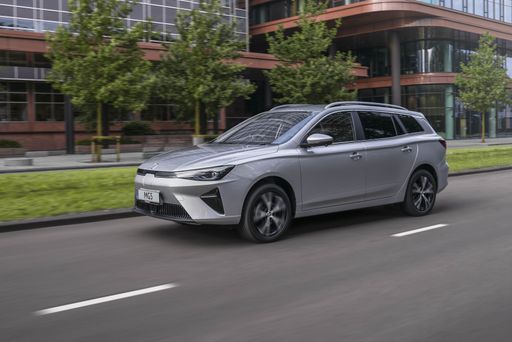 @ news.mgmotor.eu
@ news.mgmotor.eu
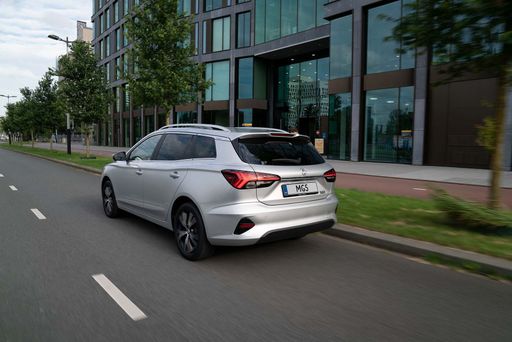 @ news.mgmotor.eu
@ news.mgmotor.eu
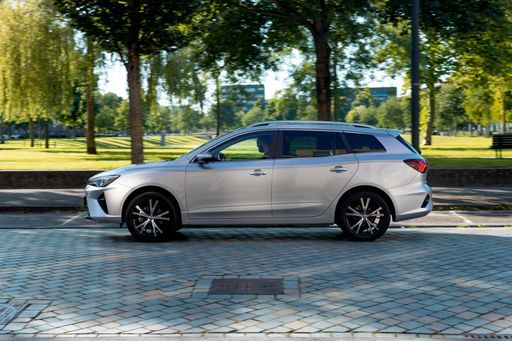 @ news.mgmotor.eu
@ news.mgmotor.eu
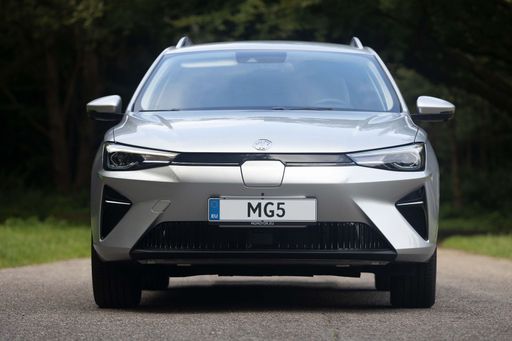 @ news.mgmotor.eu
@ news.mgmotor.eu
 @ news.mgmotor.eu
@ news.mgmotor.eu
Vauxhall Astra
The Opel Astra exudes a sleek and modern design, making it a standout choice in the compact car segment. Its interior is thoughtfully crafted, providing both comfort and cutting-edge technology for an enhanced driving experience. The vehicle is also celebrated for its efficient performance, adeptly balancing power with fuel economy to suit urban and long-distance journeys alike.
details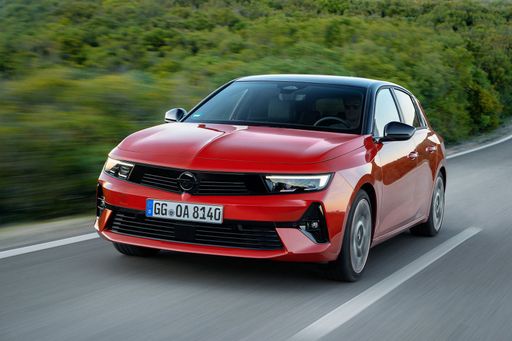 @ www.media.stellantis.com
@ www.media.stellantis.com
 @ www.media.stellantis.com
@ www.media.stellantis.com
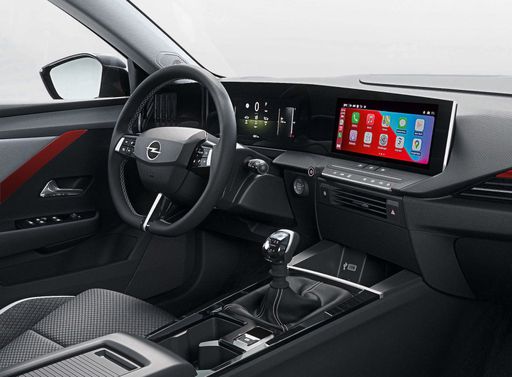 @ www.media.stellantis.com
@ www.media.stellantis.com

|

|
|
|
|
Costs and Consumption |
|
|---|---|
|
Price
30400 - 34300 £
|
Price
25200 - 40500 £
|
|
Consumption L/100km
-
|
Consumption L/100km
2.2 - 6 L
|
|
Consumption kWh/100km
17.5 - 18.4 kWh
|
Consumption kWh/100km
15.40 kWh
|
|
Electric Range
310 - 400 km
|
Electric Range
82 - 419 km
|
|
Battery Capacity
48.3 - 57.7 kWh
|
Battery Capacity
51 kWh
|
|
co2
0 g/km
|
co2
0 - 135 g/km
|
|
Fuel tank capacity
-
|
Fuel tank capacity
42 - 52 L
|
Dimensions and Body |
|
|---|---|
|
Body Type
Estate
|
Body Type
Hatchback
|
|
Seats
5
|
Seats
5
|
|
Doors
5
|
Doors
5
|
|
Curb weight
1562 kg
|
Curb weight
1341 - 1736 kg
|
|
Trunk capacity
479 L
|
Trunk capacity
352 - 422 L
|
|
Length
4600 mm
|
Length
4374 mm
|
|
Width
1818 mm
|
Width
1860 mm
|
|
Height
1543 mm
|
Height
1432 - 1488 mm
|
|
Max trunk capacity
1367 L
|
Max trunk capacity
1268 - 1339 L
|
|
Payload
455 kg
|
Payload
414 - 509 kg
|
Engine and Performance |
|
|---|---|
|
Engine Type
Electric
|
Engine Type
Petrol, Diesel, Electric, Petrol MHEV, Plugin Hybrid
|
|
Transmission
Automatic
|
Transmission
Manuel, Automatic
|
|
Transmission Detail
-
|
Transmission Detail
Manual Gearbox, Automatic Gearbox, Reduction Gearbox, Dual-Clutch Automatic
|
|
Drive Type
Front-Wheel Drive
|
Drive Type
Front-Wheel Drive
|
|
Power HP
156 - 177 HP
|
Power HP
130 - 225 HP
|
|
Acceleration 0-100km/h
8.30 s
|
Acceleration 0-100km/h
7.5 - 10.6 s
|
|
Max Speed
185 km/h
|
Max Speed
170 - 235 km/h
|
|
Torque
280 Nm
|
Torque
230 - 360 Nm
|
|
Number of Cylinders
-
|
Number of Cylinders
3 - 4
|
|
Power kW
115 - 130 kW
|
Power kW
96 - 165 kW
|
|
Engine capacity
-
|
Engine capacity
1199 - 1598 cm3
|
General |
|
|---|---|
|
Model Year
2022
|
Model Year
2023 - 2025
|
|
CO2 Efficiency Class
A
|
CO2 Efficiency Class
D, A, C, B
|
|
Brand
MG
|
Brand
Vauxhall
|
What drivetrain options does the MG MG5 have?
The MG MG5 is offered with Front-Wheel Drive.
The prices and data displayed are estimates based on German list prices and may vary by country. This information is not legally binding.
